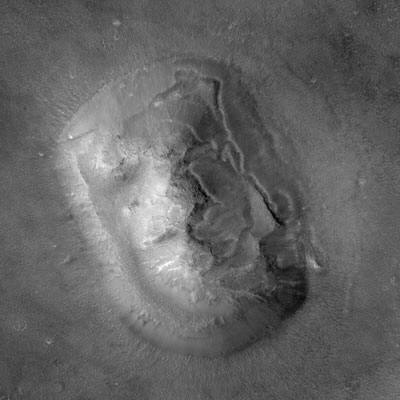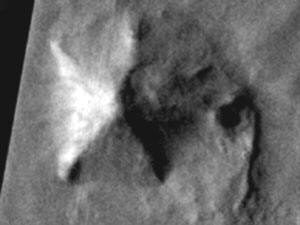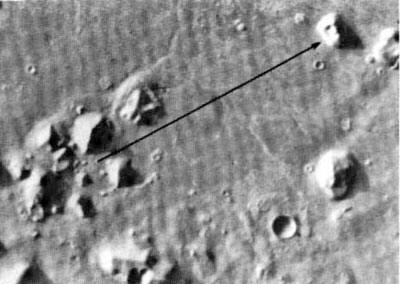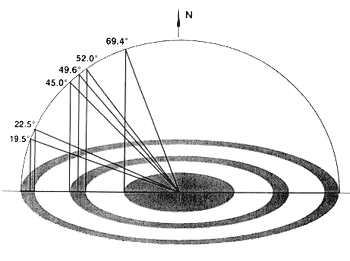|

As any reader can discern from Wilcock’s personal data, a profound and
life-changing event occurred when he was a sophomore in college, during the
year 1993. David had a friend who was told by his physics professor, in no
uncertain terms, that UFOs were real and that we had reverse-engineered
their technology. Some of the data and details were similar to the material
that was later released by
Colonel Phillip Corso in 1997, in the book
The
Day After Roswell. Corso’s book, which also discusses reverse-engineered
ET
technology, provided an excellent validation of the facts that David had
initially received.
David was deeply and permanently transformed by receiving this information.
He decided that the only possible choice he had was to devote his entire
life to understanding and explaining this phenomena, as nothing else could
possibly be more important. This personal transformation took place over a
few weeks, as he walked around and interacted in daily college life. With
the new knowledge of the reality of the UFO phenomenon, everything was
changed forever, in an irreversible manner. There was no going back to the
way he had looked at the world before; it was a complete "paradigm shift."
The weight of evidence threatened to burst forth from him wherever he went.
The people around him now seemed like puppets in a gigantic, cosmic shell
game, manipulated by an invisible hand they would never see, much less even
imagine. The world governments were jealously guarding the greatest
revelation in the history of humanity as college students sucked on "cancer
sticks" in the Food Court. When he tried to tell them what was going on,
their emotions ranged everywhere from terror to ecstasy to rage. One person
even asked him with deadpan seriousness if he was a member of a cult.
Obviously, he tended to favor those whose reactions were ecstatic.
A few months after the initial discovery, the same friend again visited
David, only this time the information added fantastic new dimensions to what
had already been said. David’s beliefs had already stretched quite a bit in
order to allow the reality of extraterrestrial life to sink in, so he was
very eager to learn more. This new era of revelation came when his friend
was given a copy of the Richard Hoagland / Mars Mission Briefing to the
United Nations in 1992 as a gift from his grandmother. This videotape was a
complete summary of the research being done by Hoagland’s team, then known
as the Mars Mission, regarding "The Monuments of Mars" or "The Martian
Enigmas." It was a videotape of a live presentation given directly to the
United Nations on their own turf- so obviously, this information was
attracting some attention.
By now, most people are aware that an enigma of sorts exists. The Mariner 1
probe photographed unmistakable tetrahedral pyramidlike forms back in 1971,
referred to as the Elysium Pyramids. This in turn spurred research at SRI
International with remote viewing, involving JJ Hurtak, Ingo Swann and
others. This was the very first phase of consciousness-related work that
suggested that a civilization had been there. This work was later included
and enhanced in Hurtak’s epic work Keys of Enoch, which pre-empted
Robert Bauval’s discovery of the Orion-Giza connection by more than fifteen years.
Then, in 1976, the Viking Orbiter 1 satellite was photographing of the
Martian surface, and on the thirty-fifth pass over the lunar surface, frame
35A76, the apparent visage of a human face stares up blankly from the
surrounding desert. From what little can be made out in the unenhanced
original, it appears to be a giant formation of rock, hardened lava or sand
in some form or another. The NASA scientists at the time dismissed it out of
hand, and did not prioritize any further time with the Viking probe to
photograph it before the probe "died", running out of its limited fuel
supply. They simply could not accept that it was anything other than a
curious and unimportant Martian feature.
 The "face" image
would lie uninvestigated for years as situations developed
that would eventually bring the reality of its existence to the masses.
True, NASA did release fuzzy photographs of it early along, and
David
remembered seeing it in copies of Odyssey Magazine, an astronomy journal for
young people, when he was in second grade. He remembers being completely
shocked the first time he saw it, and felt that there was some fantastic
truth out there waiting to be discovered. Richard Hoagland fulfilled this
task, and may well be the single most important historical figure in
alerting the public to these enigmas. The "face" image
would lie uninvestigated for years as situations developed
that would eventually bring the reality of its existence to the masses.
True, NASA did release fuzzy photographs of it early along, and
David
remembered seeing it in copies of Odyssey Magazine, an astronomy journal for
young people, when he was in second grade. He remembers being completely
shocked the first time he saw it, and felt that there was some fantastic
truth out there waiting to be discovered. Richard Hoagland fulfilled this
task, and may well be the single most important historical figure in
alerting the public to these enigmas.
In 1965, at the age of only nineteen, when most young people were still
chasing after the opposite sex and enjoying their newfound freedom to drink
beer legally, Hoagland became curator of the Springfield, Massachusetts
Museum of Science. Obviously Hoagland was a "boy genius" of astronomy to
have secured a job like this at his age. His creativity and desire to "think
big" led him to design and produce a giant commemorative event for Mariner
4’s flyby of Mars - the first time that our species had sent a probe to
another planet in the Solar System. He had an audience of 2000 people at the
museum, and 5000 more press and scientists watching at JPL in Pasadena,
California.
Clearly this was no small feat for a man at an age where most people are
lacking in self-confidence or knowledge of what they really plan on doing
with their lives. Then, when Hoagland was only 20, he served as a consultant
to NBC regarding the first soft-landing of a human-built probe on the lunar
surface. Subsequent opportunities emerged, leading to a spot on The Tonight
Show among other things. This is the obvious reason for why Hoagland did not
pursue "higher education;" he was already at the cutting edge.
Then, in 1968, after another "good move" in Hoagland’s career by becoming
Assistant Director of Gengras Science Center and Planetarium in West
Hartford, CT, Walter Cronkite took him in as a consultant to CBS News. This
gave him the unique position of explaining the science behind the Apollo
missions to the American public at age 22. By 1971, he had been involved in
several other prestigious efforts, and with Eric Burgess, he designed the
famous engraved plaque designed to tell other species of intelligent life
what we look like and where we live. Carl Sagan was able to make it happen
and get it mounted on Voyager, and acknowledged their effort in the academic
journal Science.
Then, according to his introduction in Monuments of Mars, "Since 1971
Hoagland has held a number of editorial, managerial, and consulting
positions in the space-science world." In the January 1980 issue of Star &
Sky, Hoagland set forth his "Europa Proposal," where he cited evidence of
water ice on Europa as leading towards what editor Terry Dickinson called
"The first new plausible location for life in the Solar System in ten
years."
Then, in 1981, Hoagland went to a conference in Boulder, Colorado, and there
he met Vincent DiPietro and Greg Molenaar. DiPietro is the one who needs to
take the claim of being the first to actually devote serious attention and
intellectual study to the
Face on Mars. His career is as an electrical
engineer, focused in digital electronics and image processing. He had first
seen the Face in a magazine of "extraterrestrial archeology" and promptly
dismissed it as a hoax. It would take two and a half more years before he
would again come across the photograph while he was searching through the
NASA archives of the Viking images.
Soon Greg Molenaar was also brought in on the game, equally fascinated by
this enigmatic object staring up from the picture frame. Molenaar is a
computer scientist with a similar background as DiPietro, and they were both
good friends and colleagues by this point. Together, they strove to improve
the resolution of the Martian face image, and this eventually led them to
design a pixel-by-pixel image enhancing process called "Starburst Pixel
Interleaving Technique" or SPIT. This technique paved the way for their
realization that the Face was indeed symmetrical; the SPIT processing
brought out details on the shadowed side of the photograph that would
otherwise be impossible to see.
 Later they would discover an additional frame of interest, 70A13. This
provided them with more detail that was vital to their investigation. Among
other things, 70A13 directly paved the way to the discovery of a gigantic
five-sided pyramidal object that was situated in very close proximity to
the
Face, a mere ten miles to the southwest. This object was later dubbed the
"D&M Pyramid" in their honor. The
SPIT processing showed that this object
was of fantastic interest, almost certainly artificial due to its amazing
geometric structure. Later they would discover an additional frame of interest, 70A13. This
provided them with more detail that was vital to their investigation. Among
other things, 70A13 directly paved the way to the discovery of a gigantic
five-sided pyramidal object that was situated in very close proximity to
the
Face, a mere ten miles to the southwest. This object was later dubbed the
"D&M Pyramid" in their honor. The
SPIT processing showed that this object
was of fantastic interest, almost certainly artificial due to its amazing
geometric structure.
Furthermore, they became aware of a large Egyptian-style pyramidal object
that was also approximately ten miles due west of the Face. This
sharp-edged, symmetrical pyramid also was surrounded by a host of other
roughly pyramidal mounds gathered closely together, and hence the whole area
was named "The City." The appearance of this one particular enigmatic object
on the Martian sands is literally identical to aerial photographs of the
Great Pyramid. In the following image, Hoagland’s team included the arrow on
the original to indicate how the Face would have been viewed from a series
of four mounds in the center of the city itself. The gigantic pyramid cannot
be missed, directly above the arrow, flanked by what appear to be two
significantly smaller pyramids, one to its western corner and one to its
northwestern corner. Other enigmatic formations including "The Fort," to the
east of the giant pyramid, can be seen as well, and it is possible that the
entire area is a series of pyramids, most obscured by sand buildup.

The most recent NASA photographs have only increased the resolution of this
area, but this was never even discussed in the mainstream media with any
seriousness until 2000, with the release of the Mission to Mars film from
the Disney corporation.
Although Hoagland was presented with this material in 1981, he took no
further action upon it until 1983. (Keep in mind that by this point, the Ra
contact had already ended and questioner Don Elkins would soon die.
Nevertheless, we will see how Ra spoke of this ancient Martian civilization
later in our discussion.) This polite refusal to pay attention was the
typical reaction from the scientific community, which stymied any effort
made to get this material out to the public.
Hoagland eventually got back in touch with DiPietro and Molenaar as a direct
result of his own work on "The Thing in Saturn’s Rings," a large object that
emitted very high levels of radio frequency for no apparent reason. As he
refined his search, Hoagland was attracted to the edge of the rings, where
he could barely make out a series of small satellites, or objects, which
might provide a further clue to the mystery. (It is good to note here that
after Hoagland dropped the ball on the "Thing in the Rings,"
Richard Boylan,
Ph.D., [who strongly suggests that it is an extraterrestrial spacecraft of
some sort, due to its erratic maneuvers and enigmatic properties,] picked it
back up.)
Hoagland was interested in DiPietro and Molenaar for their knowledge of
image enhancement. He wanted them to process the images of the enigmas in
Saturn’s rings, but his agenda would soon change. The researchers mailed him
much more recent, updated versions of the photographs and their analyses,
and while he studied them at home, it finally hit him with the arresting
force of a planetary collision. Says Hoagland in Monuments:
I realized that I was looking at something that was either a complete waste
of time, or the most important discovery of the twentieth century if not of
our entire existence on Earth.
Hoagland quickly took DiPietro and
Molenaar on board and formed "The Mars
Mission." This was not to say that it was easy for Hoagland to acclimate to
the possible reality of this data; in his own words, he was "dragged kicking
and screaming" to the truth of such an incredible postulate. But slowly and
gradually, the pieces started fitting together.
Hoagland himself made important contributions to the data, including the
discovery of the "Fort," situated directly northeast of the Egyptian-styled
pyramid and "City" as we have just shown. It is quite clear to see that the
"Fort" is a highly geometric object in the image. It looks exactly like two
adjoining sides of a square building with a center courtyard, connected
together at a near-perfect 90-degree angle. More recent photographs have
indicated that what appeared to be a courtyard is actually an
upward-slanting mound that cast a shadow, but even in the new images the
clear geometry of this formation can be seen. Furthermore, the placement and
positioning of the "Fort" makes it a prime piece of real estate to directly
observe the Face from one edge and the five-sided D&M Pyramid from the
other.
Hoagland continued to make discoveries, including the fact that
the Face was
positioned with a great deal of ritual significance. The sunrise on the
Equinox would occur directly behind the Face, and a mound of earth many
miles to the east of the Face seemed to serve as a means to deflect glare
and make this Sunrise even more sudden and powerful to behold. In short, all
the pieces were fitting together that suggested that this was a lot more
than just a bunch of "stuff." It was, for all intents and purposes, a
stunning looking glass into a mysterious and unknown past, on a planet in
our Solar System that was not "supposed" to have life on it.
Another "multidimensional shift" in progress would come in 1988 with the
addition of Erol Torun to the Mars Mission. Torun was an expert cartographer
from the United States’ own Defense Mapping Agency. Torun’s job was to
insure that he could tell the difference between a sand dune and a
camouflaged enemy bunker. The best way to determine if an object was
artificial was by applying fractal mathematics to the image, and
Torun was
an expert in just that. Using fractals, Torun could measure the degree of
irregularity and change present within any object in a landscape. An
artificial object would receive a much higher "score" than a natural one,
due to the degree of sudden changes present within it. Torun soon discerned
that the Face and City areas were by far the most
highly fractalized, or
random, areas of the entire vicinity.
Torun’s work proved of inestimable value to the mission. He was the first to
"orthographically rectify" the Viking images. What this means to the lay
person is that Torun applied his exacting scientific protocols to turn the
frames in question into maps, with precision coordinates properly aligned
North to South. This presented everyone involved in the investigation with
an opportunity to make exacting measurements of the placement of different
objects in the Cydonia region. But nothing could prepare them for the
discoveries they would soon make.
Within a very short time, the evidence mounted to indicate that one of the
main functions of this City was to give an encoded,
geometric "message" to
its future discoverers. As is explained in great detail in Monuments of
Mars, as well as
Hoagland’s site, the brunt of
this message centered around the ratio of two fundamental mathematical
constants; namely "e" and "pi." The constant "e" comes from the study of
exponents in trigonometry; it is a value that preserves symmetry in
calculations where using exponents to a power of 10 would disturb it. We
already know that "pi" represents the circumference of a circle when its
diameter is a unit of 1. In the Martian city, there is a repeated suggestion
to mathematically divide these two values together. The "e/pi ratio," when
expressed as a numerical value, comes out to approximately 0.865. With
almost ceaseless repetition, pairs of adjoining measurements in Cydonia
would have this same exact ratio between them. The most common of all was
the angle relationship of 22.5 degrees to 19.5 degrees.
Without much delay, the Mars Mission team realized that these angles and
ratios were demonstrating something much larger than they could have ever
imagined. They seemed to illustrate, in Hoagland’s words,
…"the fabric of Reality" - how
Matter, Time and Energy are woven into the
tapestry of Everything… from stars… to planets… to atoms… to living systems…
to Intelligence itself….
"Cydonia" turns out to be... nothing less than an architectural affirmation
of the fundamental physics of the Universe - the ultimate embodiment of a
grand, "universal Architecture"… at the most archetypal level.
The reason behind Hoagland’s sweeping statements is the following:
the Cydonia Investigation has now found multiple examples of
The Message of Cydonia - identically "coded" elsewhere in the Solar System… including, here
on Earth!
What the "Message of Cydonia" reveals, which
Hoagland discusses above, is
the fundamental, multidimensional nature of - you guessed it - the
consciousness unit. We had said that the consciousness unit’s fundamental
existence is expressed as a sphere that pulsates through the differing
Platonic Solids as it "breathes." The next dimension above our own is home
to the simplest shape of all, which Plato associated with the element of
fire - namely, the tetrahedron. And, it is a statement of fact that
Hoagland’s team discovered the unmistakable mathematical signatures of a
circumscribed tetrahedron - a tetrahedron placed within a
sphere. As we will
show in later chapters, they found striking evidence of this energetic
configuration in many of the bodies in our Solar System.
Then, the plot really thickened when the same mathematical figure was seen
as being expressed in an enigmatic formation in a modern-day crop of wheat.
Hoagland’s team took the Barbury Castle crop formation discussed in the last
chapter and discovered literally identical mathematics as those of the
circumscribed tetrahedron. For example, the three rings in the center gave
all the proper angle measurements to indicate that they represent a sphere.
This was done by comparing the angle of each ring against the vertical
circular line that would define the sphere [see diagram below.]
When coupled with the plainly visible tetrahedron, it becomes immediately
apparent that we are seeing a precise mathematical depiction of one of our
“consciousness units.” [Note: The lines that gave
Hoagland the
19.5 and
49.6-degree values in the picture were from where the tetrahedron shape
itself crossed through the rings.]

So what we see is an outside force drawing us a geometrically precise map of
an energy field that covers everything from protons to planets. At this
point, the truth behind this law of the Universe is becoming more and more
crystal clear. There are many different sources coming together, and they
are all trying to give us the same information. In Hoagland’s book The
Monuments of Mars, great detail is given to the precise analysis of these
geometric relationships in the city, and it is strongly recommended for
anyone pursuing further studies on this issue. In the next chapter we will
explore another researcher’s completely different and remarkable mapping of
these energies on the physical sphere.
Return to The
Shift of the Ages
Return to Richard Hoagland
|
 The "face" image
would lie uninvestigated for years as situations developed
that would eventually bring the reality of its existence to the masses.
True, NASA did release fuzzy photographs of it early along, and
David
remembered seeing it in copies of Odyssey Magazine, an astronomy journal for
young people, when he was in second grade. He remembers being completely
shocked the first time he saw it, and felt that there was some fantastic
truth out there waiting to be discovered. Richard Hoagland fulfilled this
task, and may well be the single most important historical figure in
alerting the public to these enigmas.
The "face" image
would lie uninvestigated for years as situations developed
that would eventually bring the reality of its existence to the masses.
True, NASA did release fuzzy photographs of it early along, and
David
remembered seeing it in copies of Odyssey Magazine, an astronomy journal for
young people, when he was in second grade. He remembers being completely
shocked the first time he saw it, and felt that there was some fantastic
truth out there waiting to be discovered. Richard Hoagland fulfilled this
task, and may well be the single most important historical figure in
alerting the public to these enigmas.  Later they would discover an additional frame of interest, 70A13. This
provided them with more detail that was vital to their investigation. Among
other things, 70A13 directly paved the way to the discovery of a gigantic
five-sided pyramidal object that was situated in very close proximity to
the
Face, a mere ten miles to the southwest. This object was later dubbed the
"
Later they would discover an additional frame of interest, 70A13. This
provided them with more detail that was vital to their investigation. Among
other things, 70A13 directly paved the way to the discovery of a gigantic
five-sided pyramidal object that was situated in very close proximity to
the
Face, a mere ten miles to the southwest. This object was later dubbed the
"
